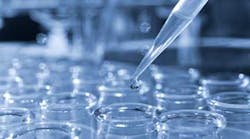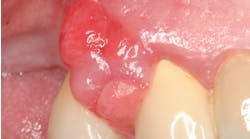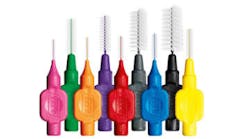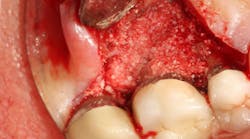Oral-systemic interconnections are typically understood to mean the impact of periodontal disease and periodontal pathogens on a variety of systemic diseases and conditions, such as cardiovascular disease, diabetes mellitus, rheumatoid arthritis, adverse pregnancy outcomes, among others. These associations have been studied intensely for generations, and the consensus is that they are now accepted in both the dental and medical professions, although the strength of the various relationships is still being investigated.
ADDITIONAL READING |Antibiotic resistance and periodontitis
There is another equally impactful oral-systemic link that has quietly proceeded largely unnoticed by many dental professionals. It is the use of saliva to detect the presence of an incredible number of diseases and conditions by evaluation of biomarkers of disease. Biomarkers in saliva have been identified for human papillomavirus (HPV), oral cancer, dental caries, Sjögren’s syndrome, sleep apnea, Alzheimer’s disease, Parkinson’s disease, and the ulcer-causing bacteria Helicobacter pylori (H. pylori), among many others. In the near future, salivary samples may be able to distinguish between bacterial and viral infections as well as detect recent heart attacks, traumatic brain injury, and lung and gastric diseases. Lab-on-a-chip technology—a prototype that uses a few drops of saliva, analyzes the salivary biomarkers, and is designed to detect the presence or risk for several diseases and conditions simultaneously—is in its latter stages of development.
Saliva contains a variety of biomolecules including DNA, RNA, proteins, metabolites, and microbes. Biomarker assays can target changes in the salivary concentration of these biomolecules, which can then be used to identify early stages of oral and systemic diseases, monitor disease prognosis, determine risk stratification, and evaluate response to treatment. The same disease biomarkers are also present in the blood in much higher concentrations than saliva. Advances in laboratory technology have enabled the detection of many of the biomarkers in the incredibly minute concentrations in which they exist in saliva. In some cases, they are in picogram concentrations, which is one trillionth of a gram.
ADDITIONAL READING |Enhancing periodontal regeneration with the use of biologics
There are many advantages to salivary sample collection over a blood draw including the noninvasiveness of a salivary sample and a virtually unlimited supply. Salivary determination of interleukin (IL) and interleukin-6 (IL-6)—which provides insight into why individuals vary in their inflammatory response to infection, HPV, and periodontal pathogens—has been available for years (OralDNA Labs, Eden Prairie, Minnesota). Salivary diagnostic testing of biomarkers for oral squamous cell carcinoma is also commercially available. The time will come in the near future in which we are able to determine the periodontal pathogens for an individual patient chairside. Salivary testing for inflammatory markers is under investigation as well.
ADDITIONAL READING |Increasing dental case acceptance through the use of salivary diagnostics
The impact of salivary diagnostic technology on health care and the dental profession in particular will be profound. Gone will be the days of one-size-fits-all treatment planning and therapy. Dental professionals may be called upon by medical colleagues to provide salivary testing for a wide variety of conditions. Chairside determination of diabetes status is already approved in New Jersey and is reimbursable by some insurance carriers. All of these advancements are patient-facing, which they should be. Our patients are the primary beneficiaries of this technology.
The profession I entered upon graduation from dental school in 1982 bears no resemblance to the one in which we work today. Thank goodness for that.
Follow Dr. Nagelberg’s blog on DentistryIQ called “Making the Oral-Systemic Connection.”
Richard H. Nagelberg, DDS, has practiced general dentistry in suburban Philadelphia for more than 30 years. He is a speaker, advisory board member, consultant, and key opinion leader for several dental companies and organizations. He lectures on a variety of topics centered on understanding the impact dental professionals have beyond the oral cavity. Contact Dr. Nagelberg at [email protected].









